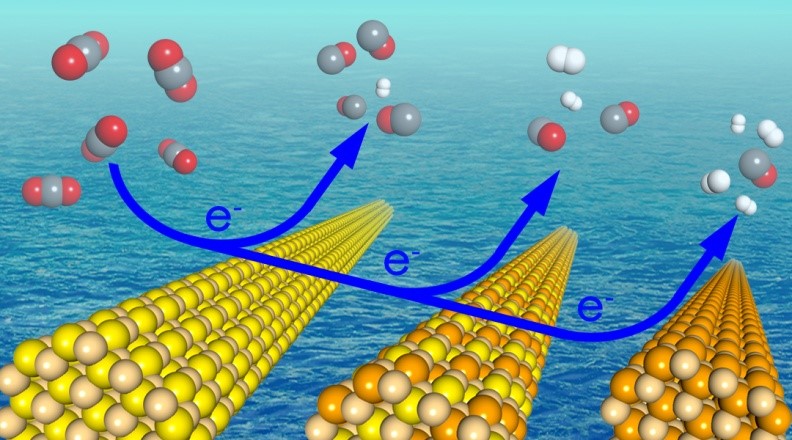- Laboratory dynamics
- notice
Laboratory dynamics
A Superior Catalyst for Tunable Syngas Production in CO2 Electroreduction
Recently,the research group of Prof. Jie Zeng has made a breakthrough in the development of catalysts for electroreduction of CO2 into syngas. Researchers designed cadmium sulphoselenide (CdSxSe1-x) alloyed nanorods as active and stable catalysts, which enabled the widest range of syngas proportions ever reported at high current density in CO2 electroreduction. This work was published on Advanced Materials (Adv. Mater. 2018, doi: 10.1002/adma.201705872) entitled as “Achieving the widest range of syngas proportions at high current density over cadmium sulfoselenide nanorods in CO2 electroreduction”. Graduate students, Rong He and An Zhang, were the co-first authors of this work.
As the mixture of CO and H2, syngas serves as an important feedstock in the petroleum industry for synfuel production. In practical applications, specific ratios of CO/H2 in syngas are required for the optimization of different industrial processes. Currently, syngas with tunable compositions is mainly produced by two mature technologies, including coal gasification and natural gas reforming. The dependence on non-renewable fossil fuels drives researchers to explore sustainable alternatives for tunable syngas production. Given the combination of CO2 reduction and water splitting, electroreduction of CO2 in aqueous electrolyte is a sustainable alternative to produce syngas. However, it is challenging to develop catalysts which can achieve tunable syngas production with a wide ratio of CO/H2 while maintain a high current density.
Herein, researchers developed CdSxSe1-x alloyed nanorods to achieve tunable syngas production with the widest range of syngas proportions ever reported at high current density in CO2 electroreduction. The ratio of CO/H2 in syngas can be easily tuned from 4:1 to 1:4 by increasing the Se content in CdSxSe1-x nanorods. Notably, all CdSxSe1-x nanorods exhibited high current density (>25 mA cm-2) and excellent long-term stability. Mechanistic study revealed that the increased Se content in CdSxSe1-x nanorods strengthened the binding of H atoms, resulting in the enhanced selectivity for H2 production in CO2 electroreduction.
This work was supported by CAS, MOST of China, and National Natural Science Foundation of China.

Scheme for electroreduction of CO2 into syngas over CdSxSe1-x alloyed nanorods

